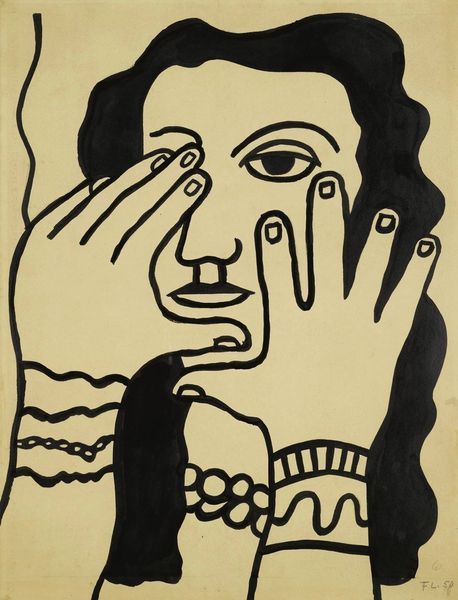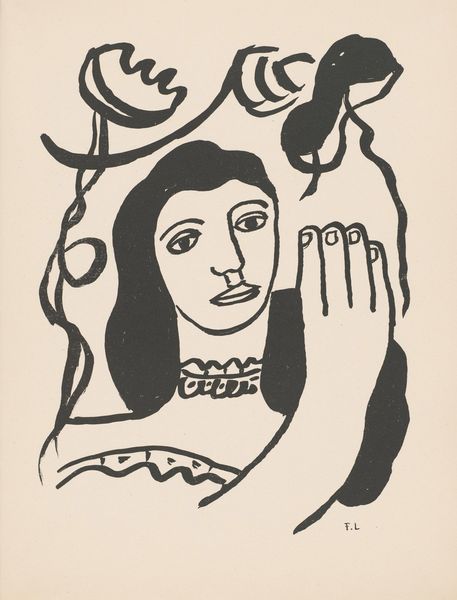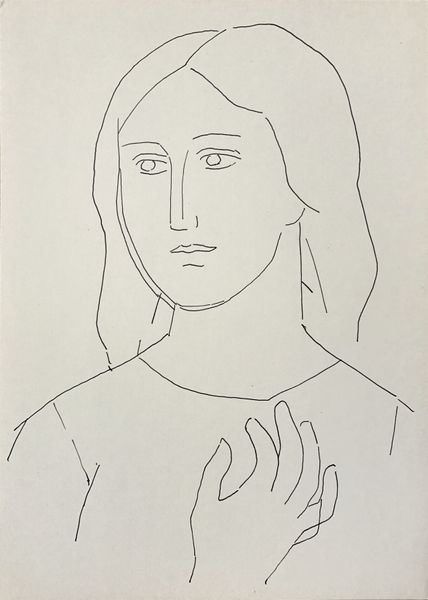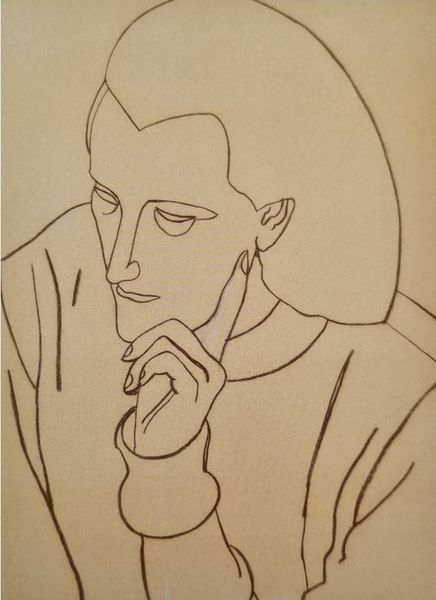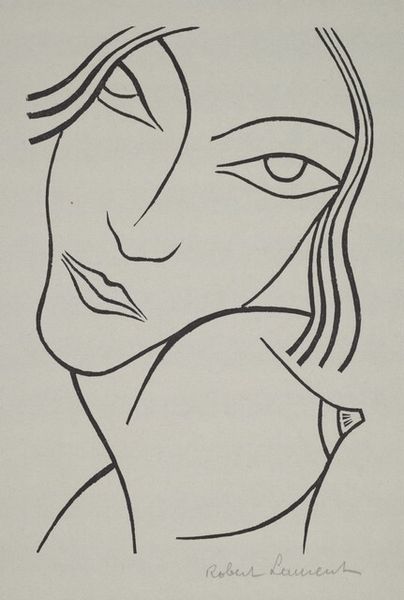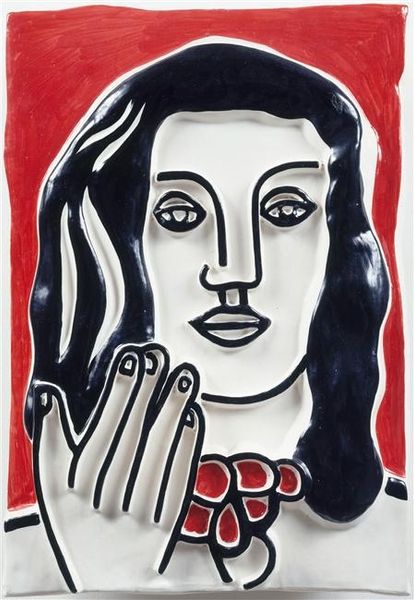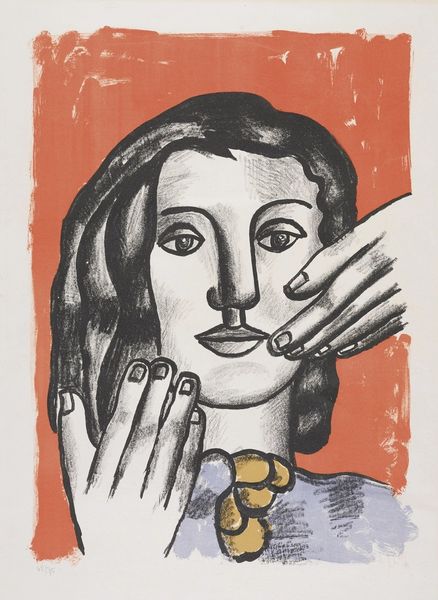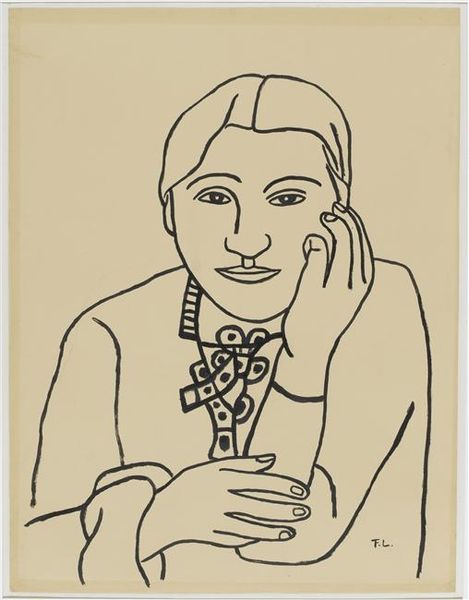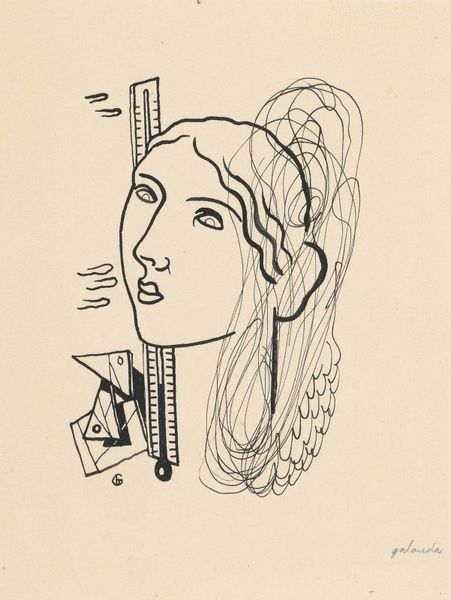
Copyright: Modern Artists: Artvee
Editor: This is "Nadia" by Fernand Léger, painted with tempera sometime between 1948 and 1952. I'm immediately struck by how simplified the portrait is; the lines are so bold and graphic. How do you interpret this work, especially considering its historical context? Curator: Well, first, it’s important to consider Léger's engagement with social realism after the Second World War. This wasn't just about representing reality, but about creating an art accessible to the masses. Léger believed in art's social function. Does "Nadia," with its clear lines and flattened perspective, feel like it’s attempting to break down artistic barriers and communicate a message simply? Editor: It definitely feels very direct, but I’m wondering what message it’s conveying, especially in its portrayal of a woman. Is there something more here than just a simplified portrait? Curator: Absolutely. Think about the representation of women in art history. Léger's simplified and somewhat androgynous portrayal can be seen as a challenge to traditional, often idealized, depictions of women. He presents Nadia not as an object of desire but as a modern subject, actively participating in the visual space. Her gaze is direct, assertive almost, wouldn't you say? Editor: I see what you mean! The direct gaze and strong lines do give her a sense of agency, different from many other portraits from that time. It challenges the idea of the passive female subject. Curator: Exactly. And that’s where thinking intersectionally becomes important. Gender, class, the artist’s own political beliefs—all these elements combine to shape the work's meaning. What did you take away from our chat? Editor: I see how the historical context informs how the female form is rendered, and how that reflects a socio-political position about accessibility and gender roles. Thank you.
Comments
No comments
Be the first to comment and join the conversation on the ultimate creative platform.
